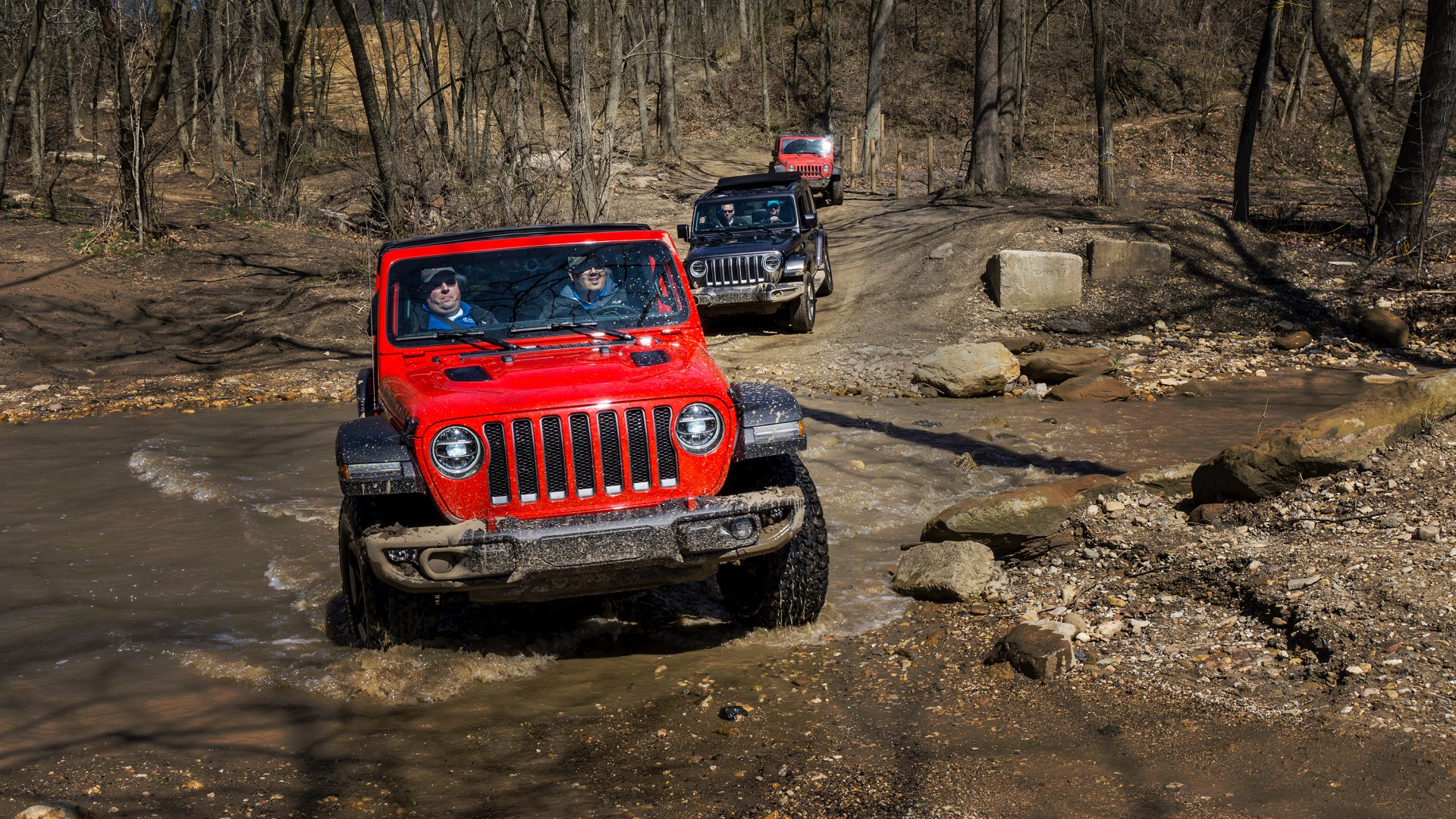

Off-roading in a street-legal or purpose-built vehicle is nothing new. In fact, it’s been around for decades and it’s grown in popularity in recent times largely because of the rise in SUV sales and because drivetrain technology has made driving off the beaten path easier, and therefore more fun. However, if you’ve never gone off the beaten path, how do you know what or what not to do?
I recently had the opportunity to hop the behind the wheel of the 2018 Jeep Wrangler at an off-road facility located a few hours outside of Chicago. The primary goal of the Jeep-organized event was to show folks the capabilities of the new Rubicon- and Sahara-trimmed JL-Jeep in its natural habitat, but in reality, it showed me much more than that. See, the automaker brought several of its Jeep Jamboree all-star guides who quite literally spend most of their lives sharpening their off-roading skills (or developing new ones) in muddy, sandy, or rocky venues across the nation.
Gregg Katchmark is one of Jeep Jamboree’s lead instructors, and he took the time to share with me the most important dos and don’ts of off-roading. Call it “Off-road 101” if you will. Remember, your vehicle might be capable of many things and it might have lots of cool off-roading gadgets, but your tools are only as good as your knowledge of how to use them.
Do’s
Bring a Buddy: According to Katchmark, sometimes things go wrong on the trail, but they can go extra wrong if you’re on your own. “You never want to off-road alone, not only because it’s not fun, but because you’re at the mercy of the elements,” said Katchmark. “You can get a flat, you can get stuck, or you can get bit by a snake. Having someone who can lend a helping hand, offer an extra set of eyes, or simply reach out in the case of an emergency is vital.”
Bring the Right Tools: You wouldn’t go camping without a knife or bug spray, so don’t go off-roading without the proper tools. “First, bring plenty of water,” said Katchmark. “Even if nothing goes wrong, you need to be hydrated. It’s easy for an off-road adventure that you thought would last four hours to actually last eight due to the unexpected. The other must-have tool is a tow strap, it’s the most basic tool to bring along, but keep in mind that you will need another vehicle in order for it to work. If you and your co-pilot typically off-road in one vehicle, get a winch. Depending on the terrain, bring tools like a pulley strap, tracks, and a jack.”
Have a plan and be prepared: Know the terrain that you’ll be exploring. “If it’s an off-road park, get a map and talk to the park staff about the must-see spots and the areas to avoid,” he said. “Communication is also key, so find out if there will be cell phone reception where you’re headed, or if you will need a CV radio.”
Oh, and don’t forget about your tires. “Tire pressure, it has a huge impact,” said Katchmark. “Depending on the vehicle and the type of terrain, lowering tire pressure to a certain extent could severely affect traction and lower your odds of getting stuck.”

Don’ts
Don’t just “wing it”: Take your time and do things right. “When on the trail, step out of your car to analyze the piece of trail in front of you before driving it,” explained Katchmark. “You might see that you need to move one way or another in order to avoid a rock or root that will slash your tire. If you get stuck, get out to analyze your situation before flooring it and making things worse.”
Check Your Ride: “The same applies to the condition of your Jeep or off-road vehicle of choice,” said Katchmark. “Check your vital fluids like oil, coolant, and transmission fluid, this will help you avoid a breakdown mid-trail.
Avoid Standing Water: Don’t drive through puddles without knowing what’s underneath. “Puddles can be deceiving, and sometimes they appear to be a foot deep when in reality they can swallow your entire vehicle,” he said. “Sometimes, at the bottom of puddles, there’s silt, which is stickier than mud. Use common sense and don’t drive your vehicle into the water,” Katchmark added.